The first SLS was rolled out of the Vehicle Assembly Building (VAB) High Bay 3 on the Crawler Transporter on March 17, 2022, and is the first lunar rocket to emerge from the VAB since Apollo 17’s Saturn V in 1972. Plus, an asteroid impact, climate change, ancient volcanoes, spring on Mars, and a new Deep Sky Network dish.
Podcast
Show Notes
Asteroid detected before impact
- ESA press release
Marine cold spells decreasing
- AGU press release
- “Understanding the Changing Nature of Marine Cold-Spells,” Yuxin Wang et al., 2022 March 17, Geophysical Research Letters
Ice cores reveal volcanic eruptions
- University of Copenhagen press release
- “Magnitude, frequency and climate forcing of global volcanism during the last glacial period as seen in Greenland and Antarctic ice cores (60–9 ka),” Jiamei Lin et al., 2022 March 15, Climate of the Past
China launches Earth-observing satellite
First all-Russian Soyuz crew in decades launches from Baikonur
- First all-Roscosmos cosmonaut mission arrives at station (NASA Spaceflight)
Week of Really Big Rockets
- SpaceX tests fully stacked Starship rocket for the first time (Teslarati)
- NASA press release
ESA needs rides to space for its satellites
- ESA weighs options for replacing Soyuz launches (Space News)
Spring melts Mars
- IMAGE: Defrosting Dunes in Kaiser Crater (HiRISE)
- It’s Springtime on Mars, and the Dunes are Defrosting (Universe Today)
Gaia watches JWST
- ESA press release
New big dish catches little spacecraft signals
- NASA JPL press release
Transcript
We have finally reached the end of a very random week in space and science news.
Today, we’re going to wrap up this weird week with stories on detecting an asteroid before impact, understanding ocean temperatures, and how ice cores record volcanic eruptions.
Then we’ll get some rocket news, including the appearance of two really big rockets.
And finally, we’ll look at spring on Mars, check out a picture from Gaia of JWST, and celebrate a new giant dish in the Deep Space Network.
All of this and more is coming at you, right here on the Daily Space.
I am your host Dr. Pamela Gay.
And I am your host Erik Madaus.
And we’re here to put science in your brain.
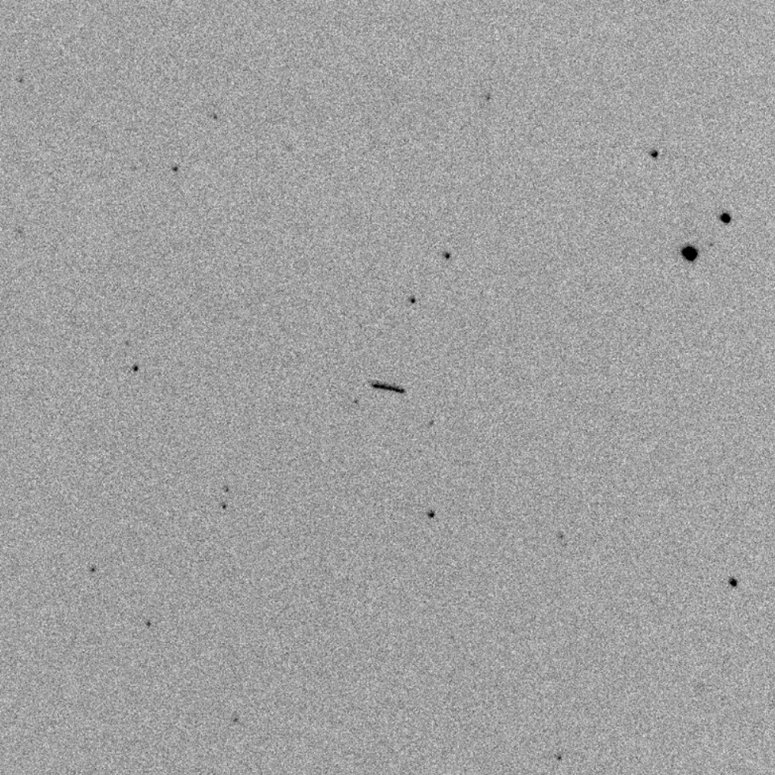
In news that is almost straight out of Don’t Look Up but far less horrifying, an astronomer in Poland detected an asteroid on March 11. The small asteroid, only about a meter in diameter, impacted the Earth to the northeast of Iceland less than two hours after discovery.
This object, now designated asteroid 2022 EB5, is only the fifth asteroid detected before impact. That’s actually kind of a good thing. While the Earth is constantly bombarded by space debris from asteroids and comets, most of that debris is very small, usually dustlike particles. Larger objects in the range of 2022 EB5 are only expected to strike Earth about ten times per year. But they are small and usually difficult to spot until they get pretty close. They also pose no threat to Earth because of their small size, so yay.
Detecting these smaller objects takes the global astronomical community, too. After Krisztián Sárneczky first discovered the object, he reported it to the Minor Planet Center, which sent out alerts to the observational community. At first, the impact chance was estimated to be less than 1%, but as more observations were taken by both Krisztián and other observers, the percentage shot up to 100%.
One of the systems triggered by the object was the European Space Agency’s “Meerkat” monitoring system. That system sent another alert to the ESA’s Near-Earth Objects Coordination Centre, which further disseminated the information to the astronomical community. Again, the asteroid was difficult to observe as it was less than 50,000 kilometers away and moving quickly across the sky.
Sadly, due to the remote location of the impact, no visual evidence was collected. The main confirmation came from infrasound detectors in Greenland and Iceland that recorded the impact, estimated to have released the same amount of energy as two to three kilotons of TNT. That energy correlates to an object about 3-4 meters in diameter, meaning the asteroid was bigger than originally thought, but that could just be a result of the measurement uncertainties.
While this is only the fifth small object detected before impact, it is also the fifth detected since 2008. Our detection technology is improving year over year, and we expect more stories like this one in the future.
Asteroids, of course, are not the only significant threat to Earth. Yes, the Universe is trying to kill us, but we’re doing a pretty good job of it ourselves.
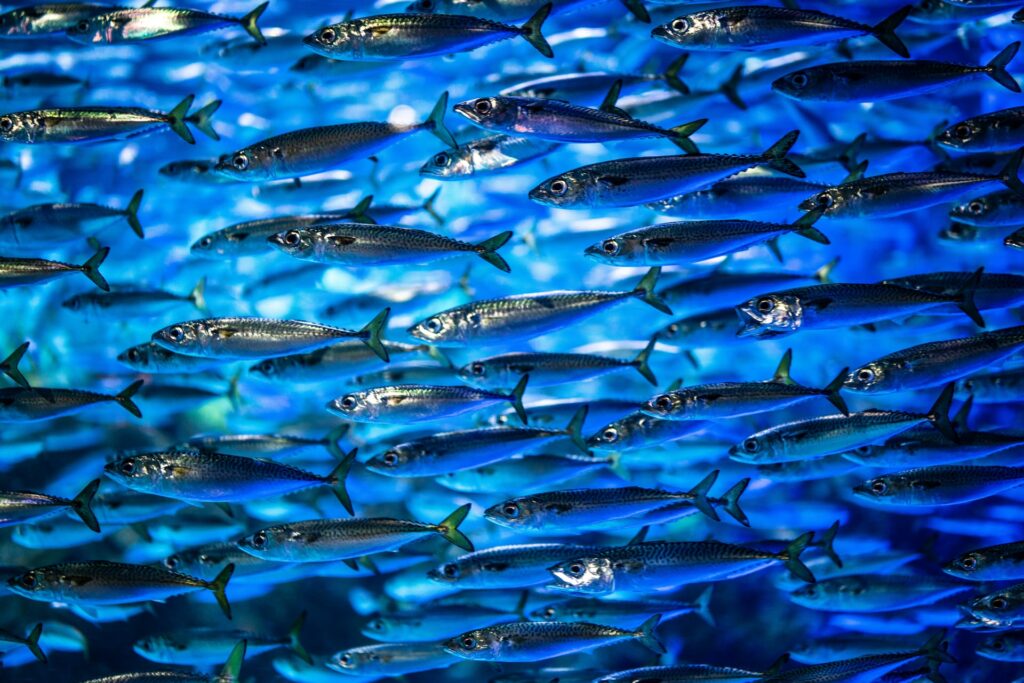
In a new study published in Geophysical Research Letters, researchers detail how marine cold spells are decreasing as the climate warms. These cold spells are occurring at a rate of about 25% that of the rate in the 1980s, and they are turning out to be 15% less intense.
Now, this news is good and bad. Less intense cold spells are not as likely to cause mass die-off events among marine life but having fewer of these cold spells also means no respite from the warming oceans. Or as lead author, Yuxin Wang, explains: Marine cold spells play dual roles in influencing ecosystems. They can cause devastating impacts, like coral bleaching and mass mortality events. But cold spells can offset the impacts of heatwaves.
Wang and her team analyzed the temperatures of sea surfaces from 1982 to 2020, looking for cold spells and heatwaves. They found that the oceans are definitely getting warmer, as expected based on global warming trends, and the surface temperatures are becoming more and more variable. And all those variations mean that the heatwaves and cold spells are changing at different rates, making them difficult to predict.
And predicting these variations in temperature is important for understanding the potential impact on not only marine life like coral reefs but also on industries such as fisheries. Oceanographer Sofia Darmaraki, who was not involved in the study, notes: Extreme events affect coastal communities and economies, but members of the public might not be aware of how they’re going to intensify in the future. We need to get the word out. Information about the underlying, physical causes of these extreme events can help improve forecasting, which can lead to the development of early warning systems. That information can be provided to fisheries and other stakeholders, and they can collaborate on the best adaptations, the best path forward.”
We really, really need to take care of our planet.
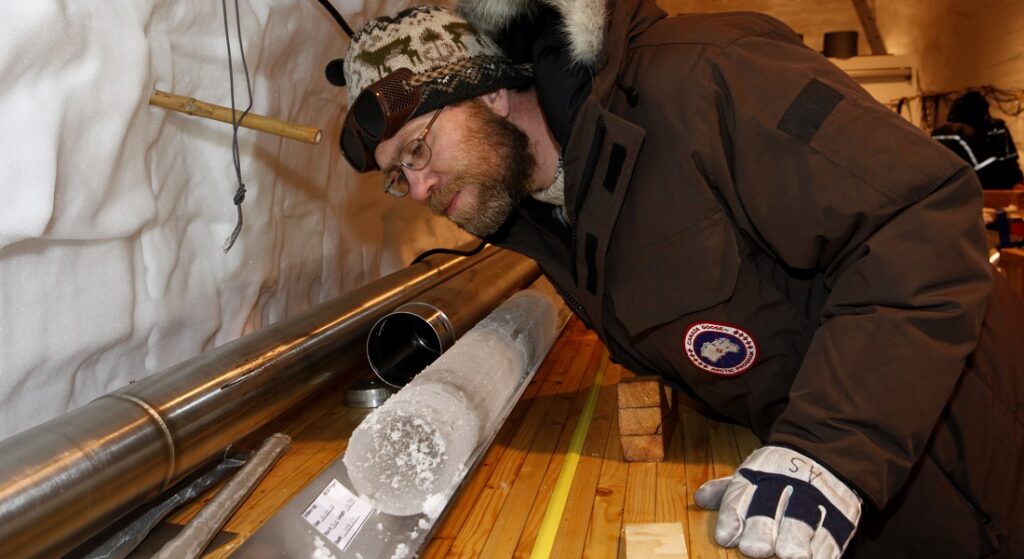
All right, let’s be fair to ourselves and Earth. We are not always responsible for climate change. We know that. There are other factors at work, such as solar cycles and volcanoes. In fact, volcanoes have had a massive impact on climate over the millennia, and we’re still learning about past volcanic events.
Take for example new research published in the journal Climate of the Past, in which scientists identified almost 2,000 volcanic eruptions as seen in ice cores taken from Greenland and the Antarctic. Those eruptions occurred all within the last 60,000 years, and they deposited massive amounts of sulfuric acid in the regions and probably elsewhere due to circulation.
Even more interesting, 25 of the eruptions were larger than any other eruption in the past 2,500 years, and almost seventy of them were larger than the 1815 Tambora eruption, which caused the Year Without a Summer and is the largest eruption on record in the past 500 years. That eruption caused temperatures to drop for years, bringing on drought and famine and causing over 80,000 deaths.
The new cores have given us the most precise look at the volcanic history of Earth ever and follow on previous work where the same team aligned the ice cores from Greenland and Antarctica to get a synchronized view of volcanic eruptions. Co-author Anders Svensson explains: To reconstruct ancient volcanic eruptions, ice cores offer a few advantages over other methods. Whenever a really large eruption occurs, sulfuric acid is ejected into the upper atmosphere, which is then distributed globally – including onto Greenland and Antarctica. We can estimate the size of an eruption by looking at the amount of sulfuric acid that has fallen.
These ice cores could also show us just how the climate changed after the eruptions, but that is research still in the works. And we need to understand those changes to predict how the climate could change and improve current models.
So do we know when the next massive volcanic eruption will occur? No. That 60,000-year timeline is too long for precise predictions. We’re pretty sure another eruption of the Tambora magnitude or greater is going to occur, but whether that’s in a hundred or a thousand years or even longer, we don’t know.
That’s enough heavy climate news. Let’s switch to Erik and rockets.
First up, on March 17 at 07:09 UTC, a Chinese Long March 4C launched the Yaogan 34-02 mission from the Jiquan Satellite Launch Center in China. The mission of Yaogan 34-02 was described as a “ survey of land resources, urban planning, crop yield estimation, and disaster prevention and reduction”.
Also on March 17, the Soyuz MS-21 spacecraft launched from pad 31/6 at the Baikonur Cosmodrome in Kazakhstan. Four hours after launch, they docked to the International Space Station (ISS). The three-person crew was the first all-Russian crew on a Soyuz spacecraft since the late 1990s and the first such crew to visit the ISS. The crew roster was decided almost a year ago in May 2021, not in response to the current geopolitical situation.
And now, we’re gonna wrap up this segment with some really big rocket news.
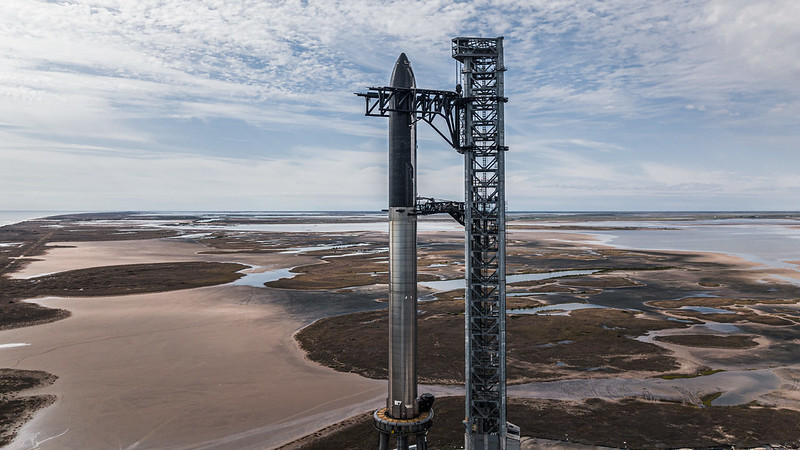
On March 14, SpaceX once again stacked Ship 20 on top of Booster 4 at the Orbital Launch Site in Starbase, using the integrated assembly and launch tower’s arms, which the fans call “chopsticks”. After the stacking, SpaceX conducted a cryogenic proof test of both stages at the same time, more than they did the first time both stages were stacked.
Starship still has work to do before it launches, and the FAA has not given its final environmental approval for full-stack Starship launches from Boca Chica. That is expected near the end of March.
A couple of days later on March 17, the long-awaited rollout of the first Space Launch System Block 1, called Artemis 1, took place at the Kennedy Space Center. The SLS was rolled out of the Vehicle Assembly Building High Bay 3 on the Crawler Transporter and moved six kilometers to LC39B over the course of eleven hours at a max speed of a whopping 1.2 kilometers per hour. This is the first Moon rocket to emerge from the VAB since Apollo 17’s Saturn V on August 28th, 1972, and comes after eleven years of development and construction that started with the 2010 NASA Authorization Act. That act was organized by then-Senator and current NASA Administrator Bill Nelson, who was on hand to provide remarks during the event.
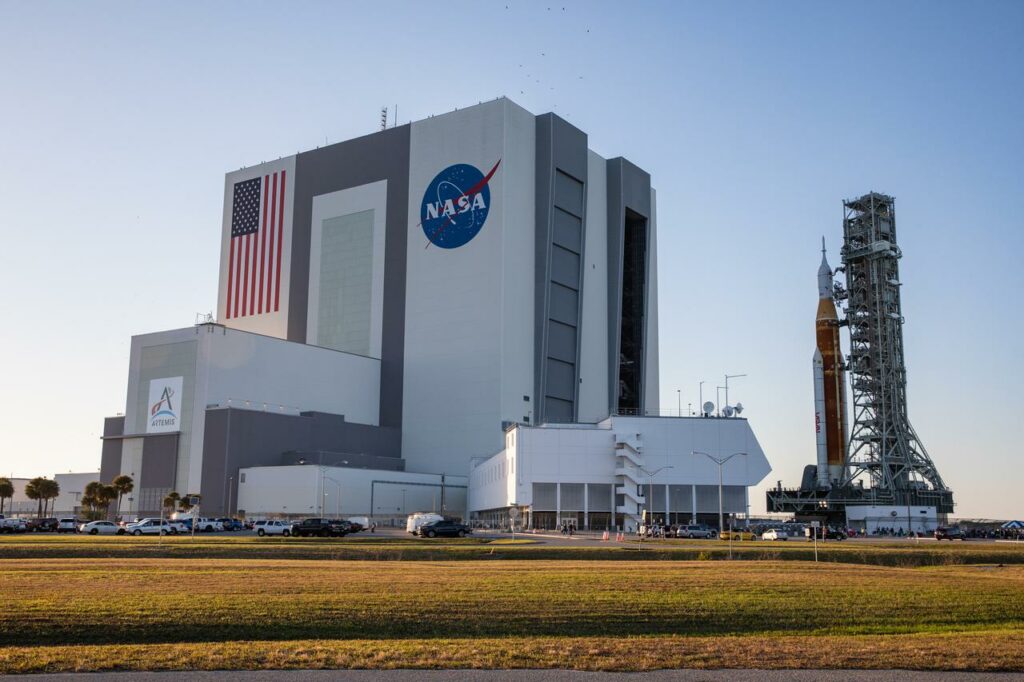
The SLS design builds on significant components and designs from the Space Shuttle program. The solid rocket boosters on Artemis 1 have about 100 shuttle flights between them across different components. Unlike the shuttle, these boosters will not be recovered and reused. The core stage itself is derived from the shuttle’s external tank but is quite different because it needs to handle the loads coming from different directions than the shuttle tank did. The main engines on the SLS’s core stage are repurposed shuttle main engines, upgraded with a new engine computer and uprated thrust. Two of the four engines flew together on STS-135, the final space shuttle mission. These four engines have 25 shuttle missions between them with one engine accounting for twelve of them.
The Orion capsule is a new design and is capable of supporting a four-person crew for several weeks. This is long enough for a lunar mission but not for future missions to Mars which are planned.
After a few more tests, including a Wet Dress Rehearsal where the rocket will be loaded with propellant like it will be on launch day, the rocket will be rolled back into the VAB for final preparations before making the trip back to the pad for launch. Artemis 1 will launch an uncrewed Orion spacecraft into high Moon orbit for a two-week mission after which the capsule will return to Earth for an ocean landing. Assuming it is successful, Artemis 2 will then carry a human crew on a free return mission around the moon.
A future version of the Starship will be dedicated to delivering NASA astronauts to the lunar surface from lunar orbit. The astronauts will get to lunar orbit on an Orion launched on an SLS. This is expected to take place on the Artemis 3 mission currently scheduled no earlier than 2025.
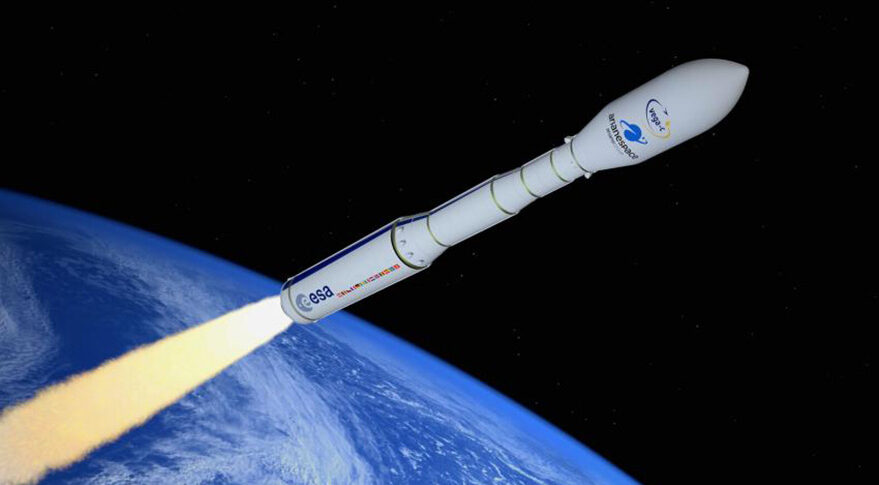
After Russia invaded Ukraine last month, the international community imposed significant sanctions on Russia’s economy, including the space program. In response, Roscosmos decided to stop Soyuz launches from ESA’s spaceport in French Guiana. This left a handful of ESA satellites without their ride to space. The planned launches range from an Earth science satellite to a space telescope and four navigation satellites.
In a meeting of the ESA Council on March 17, they explained some of the options for moving the payloads to other rockets. The most preferable option would be to wait and launch the satellites on the upcoming Ariane 6 and Vega C rockets. Launching one of the payloads on the first launch of Ariane 6 later this year would be an option but a risky one. It was originally planned to carry a mass simulator, typical for inaugural launches of a rocket. Putting a real payload on it is risky in the event of a failure.
Vega-C is also an option, but there is a problem with that too. The fourth stage of the Vega-C uses a Ukrainian-built engine. Arianespace has three engines already.; however, they may not be able to get more, so they are looking into replacements. Finally, ESA is looking into foreign rockets to launch their satellites, though they would really prefer to launch them on European ones.
From rocket business, we go back to the rest of the solar system and how other planets have seasons too.
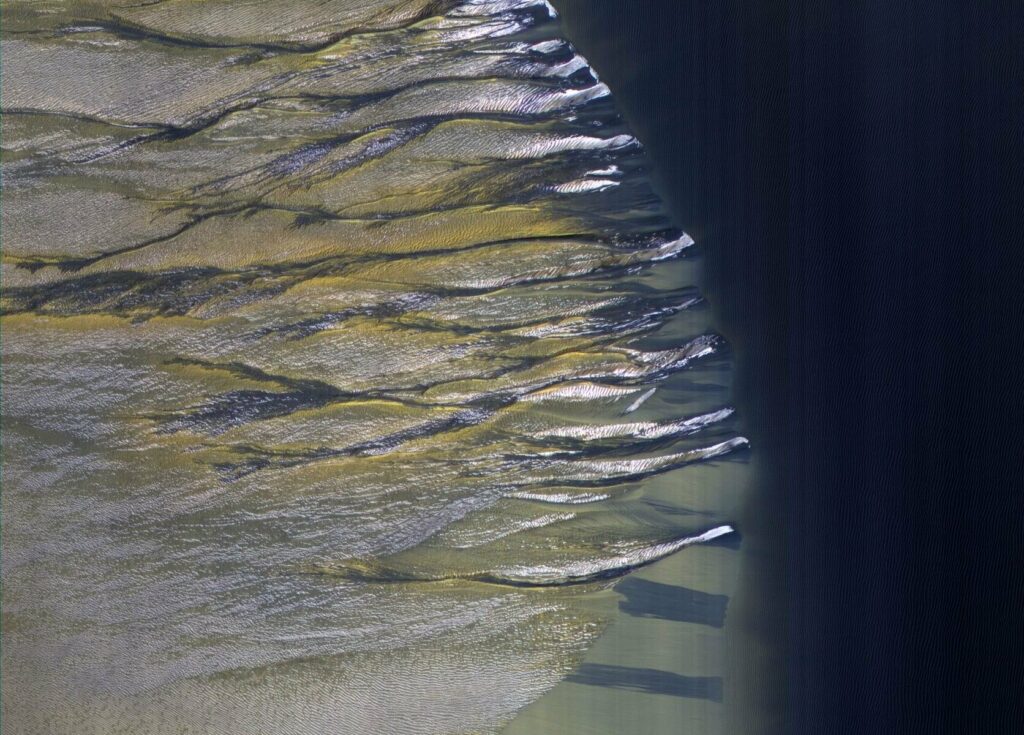
I’m recording this show from my COVID hide-out in my basement in the American midwest. This is a part of the country that experiences snow and heat, and spring means that animals I have not seen in months are starting to scurry out, and the pile of snow in the shady spot by our back door has finally melted.
In a lucky alignment of seasons, the northern hemisphere of Mars is also undergoing spring. While they aren’t seeing an emergence of chipmunks, they are seeing the seasonal snow melting, and this transition period from winter to spring is making for some amazing images. The HiRISE camera on Mars Reconnaissance Orbiter is doing its best to capture the stunning landscapes.
During the winter, ices settle across the landscape, blanketing everything with white. According to Susan Conway, a HiRISE team member: Bright patches of frost (white in enhanced color) are clearly visible and are made up of water and carbon dioxide ices. Dark streaks of sand have flowed down the dune’s slope that sometimes covers the frost. These flows are caused by the rapid transformation of the frost from ice to gas as the sun heats the dune in the spring.
This just goes to show: spring brings beauty to every world.

It is apparently a week for researchers to share the weird and awesome things they have done with their space-based cameras. From stunning images of Martian spring, we now turn to a really boring Gaia image of a starfield that just happens to catch the JWST hanging out among the stars.
Both Gaia and JWST are located at Lagrange 2 (L2), a gravitational sweet spot where the pulls of the Earth and Sun keep missions in place as they pace Earth around the Sun. This isn’t an entirely stable point, and spacecraft actually orbit around this point, using engines to keep themselves balanced in this region.
Currently, Gaia, JWST, and the Spektr-RG X-ray observatory all share L2. On Feb 18, Gaia and JWST were just one million kilometers apart, and JWST passed into the narrow stripe of the sky that Gaia is imaging. The telescope is actually programmed to throw out data from objects that don’t match the science needs of its researchers, and JWST isn’t exactly the kind of thing Gaia is meant to look at, but the team of humans behind Gaia decided to change its behavior just this one time.
And it is strangely exciting to know that a tiny dot in a fairly boring image is a telescope that just might one day reveal the story of galaxy formation in the early universe.
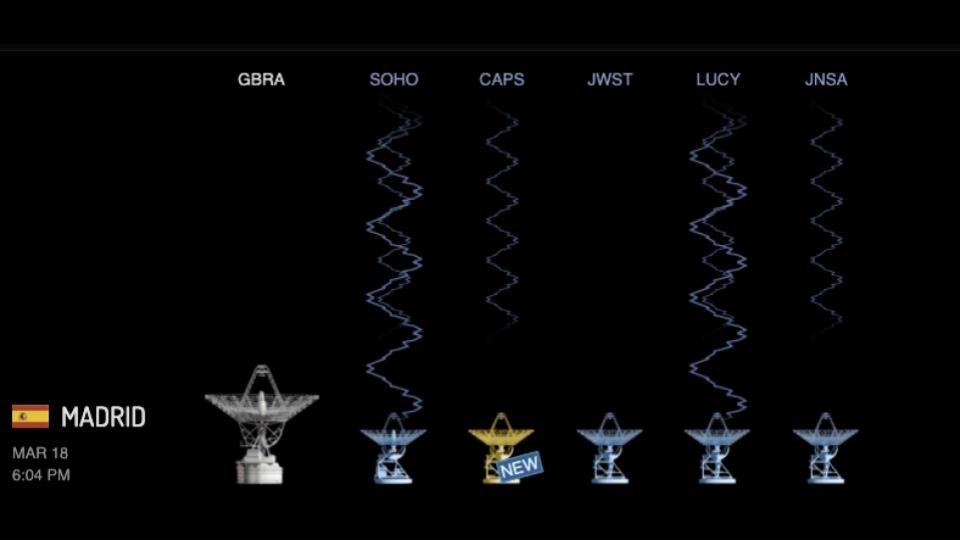
There is a really annoying reason that Gaia doesn’t save all the data it takes. That reason? It’s not possible to actually beam all the data back to Earth as fast as the mission’s data storage would fill up. The telescope is taking data faster than it can send data to Earth. So choices have to be made. These kinds of choices are one of the most frustrating parts of space science.
NASA has a network of radio dishes distributed around the world that they use to communicate with all their missions and sometimes collaborations — missions from other nations. Named the Deep Space Network, NASA has a neat webpage where you can go watch who each dish is talking with at any given moment. We’ll link to this site on our website, DailySpace.org.
If we want more data, the only way to get it is to build more antennae on earth and also to make spacecraft antennae more powerful. This week, NASA has started using a new dish at their Madrid facility that is going to give them additional eyes on the skies. Designated Deep Space Station 53, or DSS-53, the 111-foot (34-meter) dish is just one of six new systems being added to the network, which has dishes deployed in Madrid, Spain; Canberra, Australia; and Barstow, California.
We can’t wait to see what future science these systems help us bring back to Earth, but for now…
This has been the Daily Space.
You can find more information on all our stories, including images, at DailySpace.org. As always, we’re here thanks to the donations of people like you. If you like our content, please consider joining our Patreon at Patreon.com/CosmoQuestX.
Credits
Written by Pamela Gay, Beth Johnson, and Erik Madaus
Hosted by Pamela Gay, Beth Johnson, and Erik Madaus
Audio and Video Editing by Ally Pelphrey
Content Editing by Beth Johnson
Intro and Outro music by Kevin MacLeod, https://incompetech.com/music/


 We record most shows live, on Twitch. Follow us today to get alerts when we go live.
We record most shows live, on Twitch. Follow us today to get alerts when we go live.